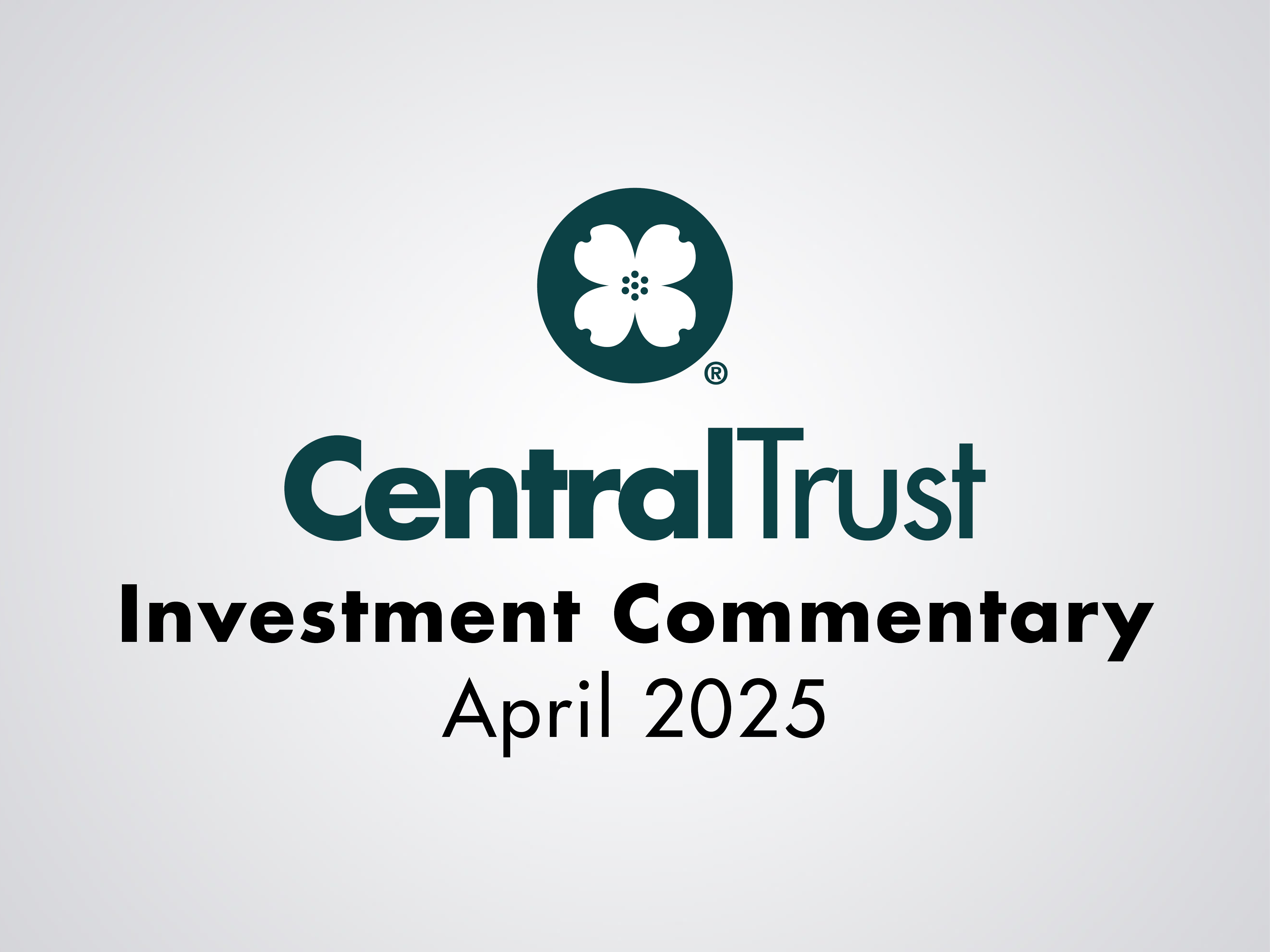April brought renewed market swings as tariffs and tumbling oil prices rattled investors. While energy lagged, tech and international stocks helped offset broader weakness, with gold gaining on safe-haven demand.

April showers brought May flowers.
After enduring a tough April for investors, Federal Reserve (Fed) Chairman Jerome Powell started the month of May off on a high note. During his press conference on May 1st, Chairman Powell noted that the next move for interest rates would not be for them to go higher. This statement, along with growth in earnings from S&P 500 companies was enough to push the markets higher throughout the month. The Dow, Nasdaq, and S&P 500 each hit a record at various times throughout the month. The S&P 500 index finished with gains of 4.96%* for the month, making the adage of “sell in May and go away” an unsound choice this time around.
While the Information Technology and Communications sectors continue to lead the market higher for the year, up 10.08%* and 6.58%* respectively for the month; the Utilities and Real Estate sectors were surprisingly strong, up 8.97%* and 5.08%*, respectively. In fact, 10 of the 11 sectors enjoyed positive returns for the month, with Energy being the sole detractor.
The broadening of returns across the stock market is a positive signal, even as Nvidia continues to dominate, up 32%** for the month, and 121%** for the year, through May. Nvidia may be getting the attention, but other S&P companies have had a terrific year so far as well, such as Super Micro Computers up 175%**, Constellation Energy Group up 85%**, and GE up 62%**. The list of companies with stocks up between 20%-40% is a broad swath of sectors and industries. It is not all roses, as there are companies in each sector that are struggling, examples include Intel, Tesla, and Boeing down 38%**, 28%** and 31%**, respectively. All in all, the winners are far outpacing the losers this year.
Small companies, strong performance.
Smaller company stocks provided better performance relative to their larger peers for the month adding to the thesis that the market returns are getting broader. The Russell 2000 index returned 5.02%* for the month, just edging out the S&P. These stocks have not been able to string together consistent outperformance relative to the large companies over the past few years. Months of outperformance have been followed by underperformance, and the gap so far this year is wide, with the S&P up 11.3%* and the Russell 2000 up 2.68%*.
We continue to favor the larger US stocks but continue to look for signs of a breakout in smaller stocks. These companies tend to be more interest rate sensitive, meaning that news regarding drops in inflation or interest rates is positive for their stock performance.
Developed countries dominate emerging market returns.
The MSCI EAFE index was up 3.87%* while the MSCI EM index was slightly positive, posting a 0.56%* gain. Central banks in countries such as the Czech Republic, Switzerland, and Hungary have started cutting rates this year, but this has done little on a broad scale to improve stock market returns. However, the European Central Bank (ECB), and the Bank of England (BOE) are both signaling that they are likely to cut soon.
The ECB appears to be taking the lead with rate cuts expected in the next few months. This divergence in interest policy compared to the US may provide some short-term performance in the stocks of Eurozone. However, the issue for developed countries, particularly Japan and the Eurozone continues to be poor demographics and low growth. It is hard to see the stocks of companies in developed markets outside the US as much more than dividend paying value stocks. The most dynamic and growing companies are in the US. The continued proximity to the Russia/Ukraine war continues to hover over the Eurozone like a dark cloud.
Emerging markets continue to be a story about China.
The MSCI EM index, noted previously, consists of 26.69%*** in Chinese stocks. Add in another 17.18%*** for Taiwan, and it is easy to understand the influence China carries on the EM market. We included a fund into our portfolios that does not own stocks of companies that are based in the Chinese mainland a few years ago due to the continued souring of relations between the US and China. Given the political climate and the longer-term problems hampering China’s economy, it continues to be uncomfortable investing in China.
Opportunities in fixed income.
Fixed income returns were positive in May, with the Bloomberg US Aggregate Bond index up 1.70%* for the month. While the total return for the year of -1.64%* is not exciting, it belies the fact that buy and hold investors are getting interest of 4%-5.25% for a variety of different investment grade bonds, short term bills, and CDs. These higher yields will continue to be an opportunity for investors with a low appetite for risk.
After Chairman Powell’s press conference, investors felt more confident moving into longer term bonds pushing yields down and returns higher. From a yield perspective, this continues to be the best time to own fixed income for over a decade. If the Fed holds true to Chairman Powell’s comments, the next move in interest rates will be a cut; however, given the change in direction from the Fed in 2019 and 2021 it is hard to have 100% confidence in even the Fed’s future guidance. Taking advantage of higher interest rates, with the prospect of principal appreciation in the future seems to be the best mindset for investing in Fixed Income.
Precious metals are soaring.
Precious metals have been on a tear this year, and our positioning has been rewarded. Silver has had a great year so far as demand continues to put pressure on supply. China has ramped up manufacturing in EVs and solar panels, which both include the use of silver. There is an open question as to how long China’s recent surge in manufacturing will last, particularly as the larger global economies are uniting in resistance to Chinese products, but if the transition to renewables continues silver will continue to be in demand.
Gold continues to see demand across the globe as a safe haven asset and store of value. Even Costco has trouble keeping up with demand for gold bullion, and central bank buying does not seem to be slowing globally. With a 3% increase in production for 2023, supplies will likely be constrained providing continued demand for gold globally.
After being soaked in April, investors dried out and smelled the flowers in May.
As we head into the summer months, seasonality punctuated by lower trading volumes and higher volatility, markets will continue to react to any changes in future interest rate and inflation moves. Meanwhile, we will continue to have a disciplined, balanced approach to protecting and increasing wealth.
* Data from Morningstar
** Data from Financial Visualizations
*** Data from MSCI
Investment commentary by Jason Flores, CFA, CAIA – Executive Vice President & Chief Investment Officer at Central Trust Company.
At Central Trust Company, we continue to reassess the rapidly changing investment landscape for both risks and opportunities. If you would like to access our full monthly outlook and additional investment commentary, visit our Investments Learning Center. As always, if you have questions or concerns, please contact your Central Trust Company team. We are always ready to help.


